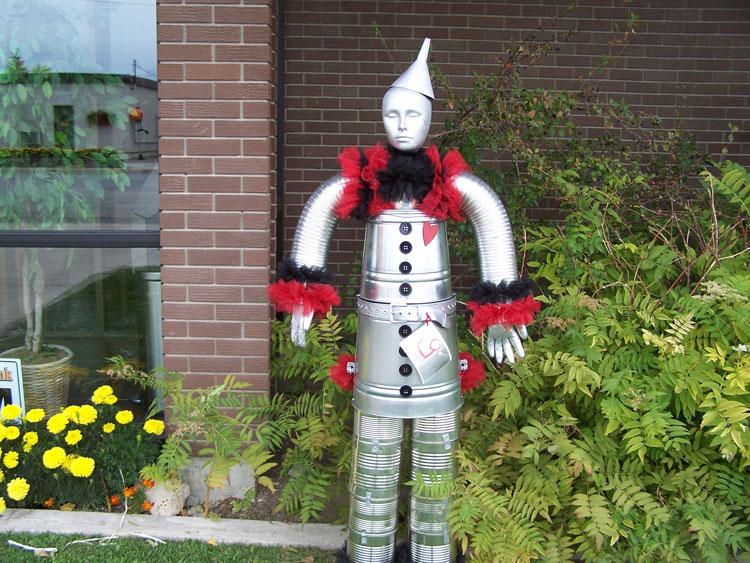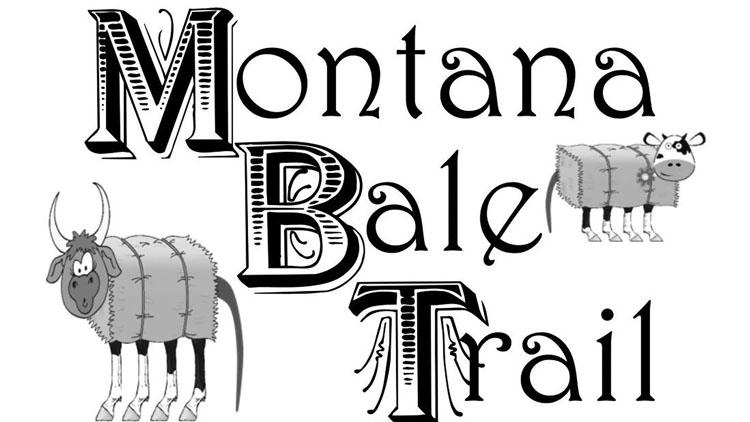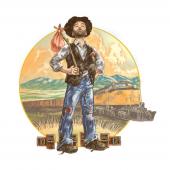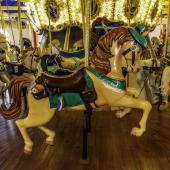Montana’s Special Scarecrow Festivals
The history of scarecrows and scarecrow festivals go way back. Ancient Egyptians used a variation of them to protect their crops along the Nile River Delta from pesky quails. But it was the Greeks, Romans, and Japanese who anthropomorphized them, dressing wood and straw up in old clothes and lending them clubs and scythes to enhance their capacity to intimidate birds. In the England of the Middle Ages, where the job of scattering hungry birds was typically given to poor boys in search of a few coins, scarecrows were reinvented following the dearth of hired labor after the Black Death thinned the population by 30 to 40% and able-bodied boys were in short supply. In the Americas, many agrarian Native-American tribes employed some variation on the modern scarecrow.

This history and lore makes it hardly surprising that there are those for whom scarecrows provoke a strong sense of unease. After all, they can be so lifelike that you still half expect them to pick themselves up off of their post and begin shuffling towards you. Or perhaps, conditioned by The Wizard of Oz, you begin to think of them as sad, kindhearted creatures that make up for their lack of brains with a kind of folksy wisdom. Maybe you want to free them from their posts yourself. The organizers of Montana’s October scarecrow festivals would kindly ask you not to feed, agitate, or liberate the scarecrows.
In Stanford, Montana, a sleepy little farm and ranch town in Central Montana, Tess Brady, pillar of the community and organizer of the Stanford Scarecrow Festival, clearly loves her town. But even before the flowers of summer, Tess has already started planning her scarecrow. “I start thinking of what I’m going to do in about April,” she says. “Plus I have to give my husband fair warning on what building and welding needs to be done for my creation!”

Tess worked at the Basin State Bank for 43 years, and now she says she “just does whatever makes me happy”, and a big part of that is her little scarecrow festival, which garners some 20-30 entries a year. Tess personally tags the scarecrows and helps assemble the panels of judges, not to mention working on two or three scarecrows each year. Asked if she has any favorites from past years she speaks with admirable small-town diplomacy: “as far as favorite ones, there are too many to mention. It is amazing how people come up with an idea for one.”
Brady got the idea for the scarecrow festival in 2007 from an article she read in Taste of Home magazine, and she thought it would be nice to “decorate Main Street for Fall and have some fun with it.” Soon, scarecrows of increasing complexity and artfulness began to line Main Street. Along with a chili feed and an occasional pumpkin toss or race for the kids, the Stanford Scarecrow festival comprises a major part of the small town’s Autumn social life, and much of it is owed to Tess Brady’s involvement. As one Stanford resident told a reporter for Treasure State Lifestyles, “Stanford would be a dead town without Tess.”

About 250 miles away, south of Missoula, lies the town of Stevensville, Montana. Nestled in the Bitterroot Mountains and next to the Bitterroot River, Stevensville is, like Stanford, a rural agricultural town, and like Stanford is crazy about scarecrows. Now in its 14th year, the Stevensville Scarecrow Festival was started by Gary Knapp, the president of the Stevensville Art and Sculpture Society. Stevensville is a community with higher than average concentration of artists. They are drawn and “inspired”, according to Lorraine Roach, the Executive Director of the town’s Main Street Association, by “awesome mountain views and wildlife.” The scarecrow festival provides a surprising but fitting creative outlet for many of those artists. After Knapp’s death in 2012 the festival continued in his honor.
The festival has become such an integral part of life in Stevensville that businesses and groups begin coming up with ideas nearly as soon as one festival ends. “The Scarecrow festival is quite competitive,” Roach says. “Employees and members are sworn to secrecy about their entry. It’s all in good fun, but they’re in it to win it!”
Even though the event takes place in October, the Stevensville Festival tries to avoid “gloom and gore”, though apparently many viewers were at least a little discomfited by “Scary Barry’s Root Canal,” the scarecrow display cooked up by the Barry Yaskus Family Dental Clinic. More often, according to Roach, “the focus is on creative and whimsical dioramas.” Last year’s attendance rose to 3,000 people on Friday night, and another 2,500 or so on Saturday and Sunday. But since groups of schools and senior living communities from all over the state come to see the displays, which remain in place for two weeks (this year you can see them until October 12) the Main Street Association estimates that 2019’s display will garner somewhere around 10,000 visitors.

Every year folks who view the scarecrows will vote for their favorites in categories like children’s displays, a combination nonprofit, family or individual category and one for businesses that have prepared their own creations. Between each of the categories, the Main Street Association expects about 50 – 60 entries, the most the contest has ever New this year will be Scarecrow Brewfest, where visitors can appreciate the tableaus while enjoying “20 craft brews, premium wines, local hard cider, food, and music”.
The two scarecrow festivals aren’t in competition with one another, although Tess Brady does point out that, for her money, Stanford’s creations “stack up pretty good in comparison to Stevensville’s scarecrows.” She does admit, however, that she once drove to Stevensville to have a look.
So it will be up to the intrepid scarecrow fanatic to drive to both and decide which has the better beer, the tastier vittles, and the more creative scarecrows. Or they could just enjoy this relatively new tradition that involves the unquestionably inventive use of old clothes, scrap metal, straw, and whatever other materials the creative folks of Stanford and Stevensville have on hand.
But what the creators of the Stanford and Stevensville scarecrows are really crafting is something altogether rarer and more valuable than merely objects for the frustration of bird appetites: they have created a way to celebrate these small town’s senses of creativity, of togetherness, and of their pride in their community. Throw in some chili and some beer, and that sounds like a hell of a way to spend a few crisp October nights.


MONTANA BALE TRAIL
Once you’ve checked out Montana’s scarecrow festivals, you might consider visiting their kissing cousin, the Hobson Hay Bale Trail. Held every Autumn (this year it started on September 8th), the Hobson Hay Bale Trail features miles of artfully and creatively imagined hay bales arranged on a 22-mile route from Hobson to Utica to Windham. Those who travel the whole Hay Bale Trail will see more than 50 displays, from the cute to the scary to the surreal. And then they can pick up a ballot at either Hobson or Windham, grab a burger and a beer, and vote on their favorite displays. You may not have considered hay an artistic medium before, but you won’t be able to help it after you’ve taken in the Hobson Hay Bale Trail. It’s not to be missed.













- Reply
Permalink